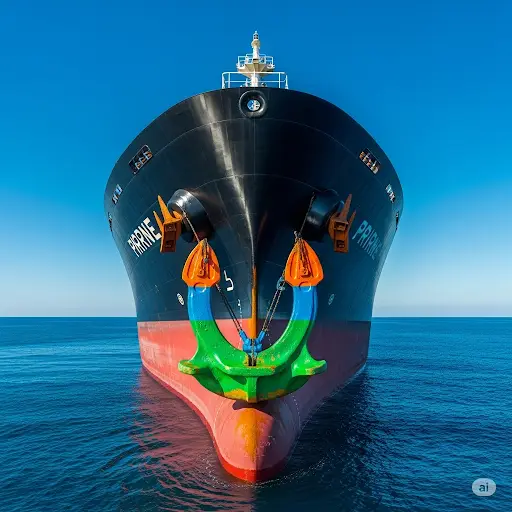The Paradox of Supply: OPEC+’s Push Meets Red Sea’s Pull.
In the intricate theatre of global energy, not all equations yield simple answers. This week, the market presents a compelling paradox: an intentional surge in supply from the world’s leading producers, yet crude prices resist a sharp descent. The reason lies not in conventional fundamentals alone, but in the volatile intersection where strategic production gambits collide with escalating geopolitical flashpoints. This is the new normal – a market perpetually balancing planned supply against unplanned, high-stakes disruptions.
As of this Wednesday afternoon, July 9th, in New York, the oil market continues to unravel these complexities. Crude prices have eased slightly from their recent two-week highs, with Brent currently trading around $70.15/bbl and WTI at $68.33/bbl. This subtle dip comes even as we await the latest U.S. crude inventory data, but more significantly, it’s occurring amidst a backdrop of escalating geopolitical risk, a force powerful enough to override immediate supply concerns.
OPEC+’s Unwavering Supply Offensive
The strategic decision by the OPEC+ alliance on Saturday, July 5th, to increase oil production by a substantial 548,000 barrels per day (bpd) for August remains a cornerstone of current market dynamics. This move, a notable acceleration from previous monthly increments, solidifies their pivot towards a definitive “market share” strategy.
OPEC+ members continue to signal confidence, with some energy ministers asserting that the market genuinely needs these barrels, citing an absence of significant stock builds (a perspective that somewhat contrasts with broader inventory data). This accelerated unwinding of cuts, targeting the restoration of approximately 80% of their 2.2 million bpd in voluntary adjustments by November, clearly demonstrates the group’s unwavering resolve to reclaim influence and volume in a competitive landscape.
The Red Sea’s Escalating Pull: A Supply Constraint
While OPEC+ charts its course, an entirely different, and far more volatile, force is exerting its “pull” on supply. The Red Sea crisis has tragically intensified. Reports confirm that the MV Magic Seas, attacked by Houthis on Sunday, July 6th, has now reportedly sunk. More gravely, new intelligence indicates that another commercial vessel, the MV Eternity C, suffered continuous Houthi attacks yesterday (July 8th), resulting in at least four confirmed fatalities and multiple injuries. The Liberian delegation to the International Maritime Organization (IMO) expressed “shock and grief” over these attacks, which claim innocent seafarers.
This is not merely an “incident”; it’s a rapidly deteriorating security situation in the Bab al-Mandab Strait, a critical choke point for 8-10% of global oil trade. These repeated, lethal assaults will inevitably lead to renewed re-routings around the Cape of Good Hope, adding significant time and cost to voyages. Marine insurance premiums are already spiking, reflecting the heightened threat to vessels and crews. The U.S. State Department’s description of these as “unprovoked Houthi terror” underscores the gravity of the situation and the international condemnation.
The Market’s Reconciling Act: Price Resilience
Despite the fundamental pressure of OPEC+’s increasing supply, crude prices this week have shown remarkable resilience. The dip from two-week highs today is marginal, certainly not a collapse. This peculiar market behavior is best understood through the lens of a direct response to geopolitical risk.
Critically, the U.S. Energy Information Administration (EIA) has just revised its 2025 Brent crude oil price forecast upward, now projecting an average of $68.89/bbl. This is an increase of over $2.90 from last month’s estimate, and the EIA explicitly attributes this revision to “increased geopolitical risk” and “unrest in the Middle East.” This is a powerful piece of intelligence: even as more barrels hit the market, the very real threat to their transit routes is bolstering price expectations.
The market is attempting to reconcile two profoundly contrasting forces: the deliberate, fundamental increase in supply from producers and the sudden, unpredictable imposition of risk premiums and effective supply constraints due to escalating conflict. This is the core paradox of our current market.
The Path Forward: Volatility as the Only Constant
This week’s events highlight that the era of simplistic supply-demand models is, for now, a relic of the past. We are operating in a multi-layered environment where calculated production strategies meet unpredictable acts of geopolitical aggression. The market’s current resilience is a testament to this complex new equation.
As we look ahead, volatility is the only certainty. Each new development, whether from an OPEC+ meeting room or the treacherous waters of a global chokepoint, will send ripples through an already taut system. Monitoring both producer actions and geopolitical flashpoints with unwavering vigilance is paramount.
Conclusion: The New Equation
The age of simple supply-demand models is over. We are operating in a multi-layered environment where calculated production strategies meet unpredictable acts of geopolitical aggression. The market’s resilience today is a testament to this complex new equation. Understanding this paradox is your key to navigating the turbulent waters ahead. Stay vigilant.
Important Note on Volatility: The oil and gas market is experiencing significant volatility. Prices for crude oil, refined products, and associated logistical costs are changing rapidly. The figures quoted above reflect the general market situation as of Wednesday, July 9, 2025, New York Time. This is a fast-evolving situation, and continuous vigilance and reassessment are paramount.





